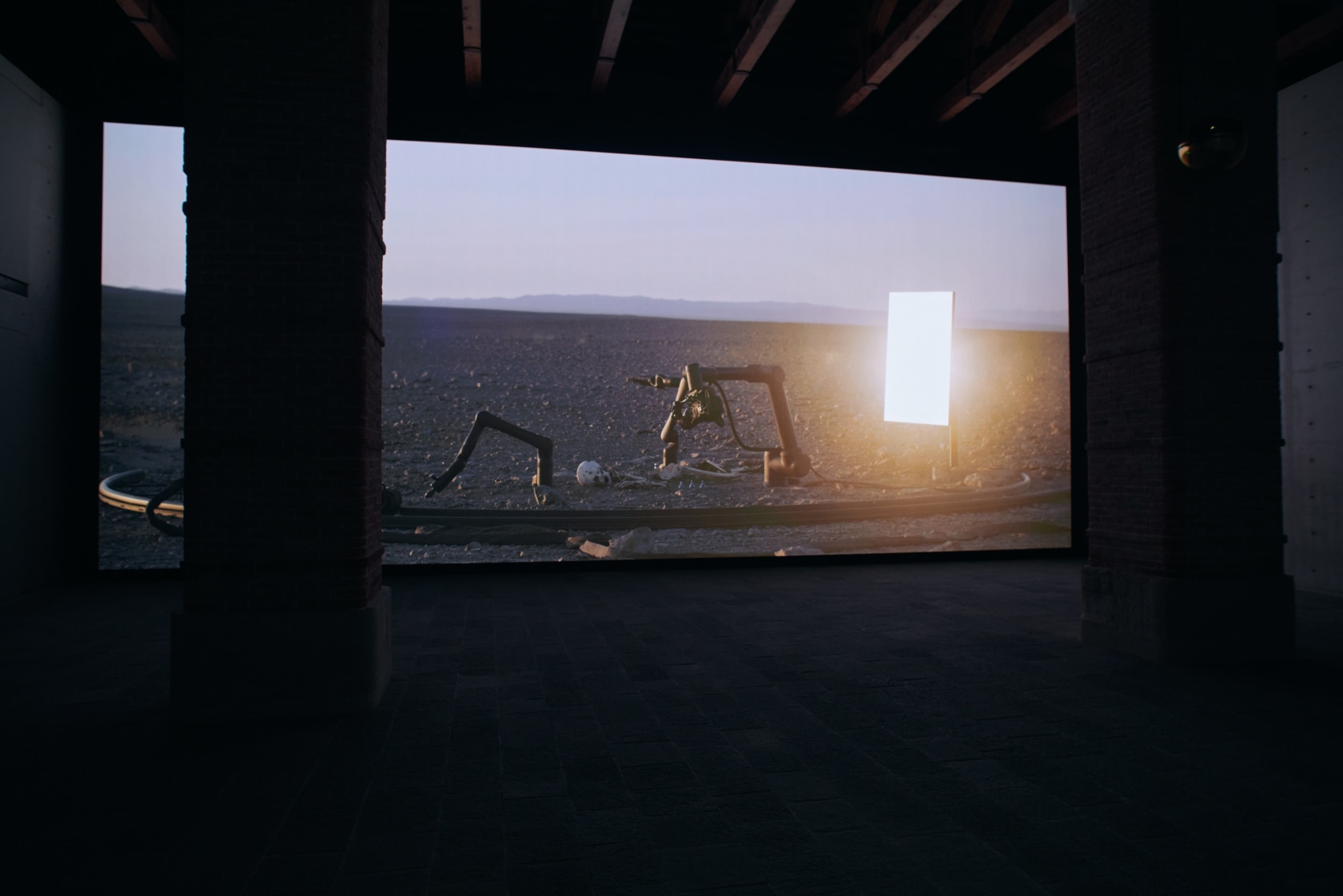Pierre Huyghe Camata, 2024
A self-directed film continuously edited in real-time by Artificial Intelligence, Camata draws on footage shot in the Atacama Desert.
At the work’s center is a found skeleton located in that Chilean desert. The skeleton has exerted an ongoing fascination on the artist. It first appeared in a photographic work, Cerro Indio Muerto, 2016. The remains, which most likely were left undisturbed, except by the elements, have lain there since the early twentieth century. Parts of cloth, skin and hair are visible, much desiccated. From the clothes and chemical analysis of the remains, it was deduced to be those of a miner, to which the title also alludes: Chuquicamata, also located in the north of Chile, is the largest open pit copper mine in terms of excavated volume in the world.
Huyghe set up an AI-powered scenario at this extraordinary site. Akin to a miniature film set, the skeleton is surrounded by a semi-circular track. Inside, near the remains, two robotic arms near the skeleton are engaged in gestures, placing objects near the skeleton, removing them, pointing toward the objects and the landscape. One camera is on a robotic arm, one camera moves along the track and a third camera is placed outside the track, representing an inside and an outside onlooker or witness. A moving heliostat, its movements also choreographed by AI, is situated inside the circle the track suggests.
From this footage Camata articulates an infinite burial ritual as self-determined process independent of any human intervention. The operations by the robotic arms execute enigmatic gestures, as all parts of the scenario are animated by AI: it moves the robotic arms and the heliostat, as well as determining the different perspectives the camera takes of the scene and the landscape. At the Punta della Dogana, information gathered by sensors in the exhibition space will impact the AI’s editing process of the pool of imagery, continuously changing Camata.
